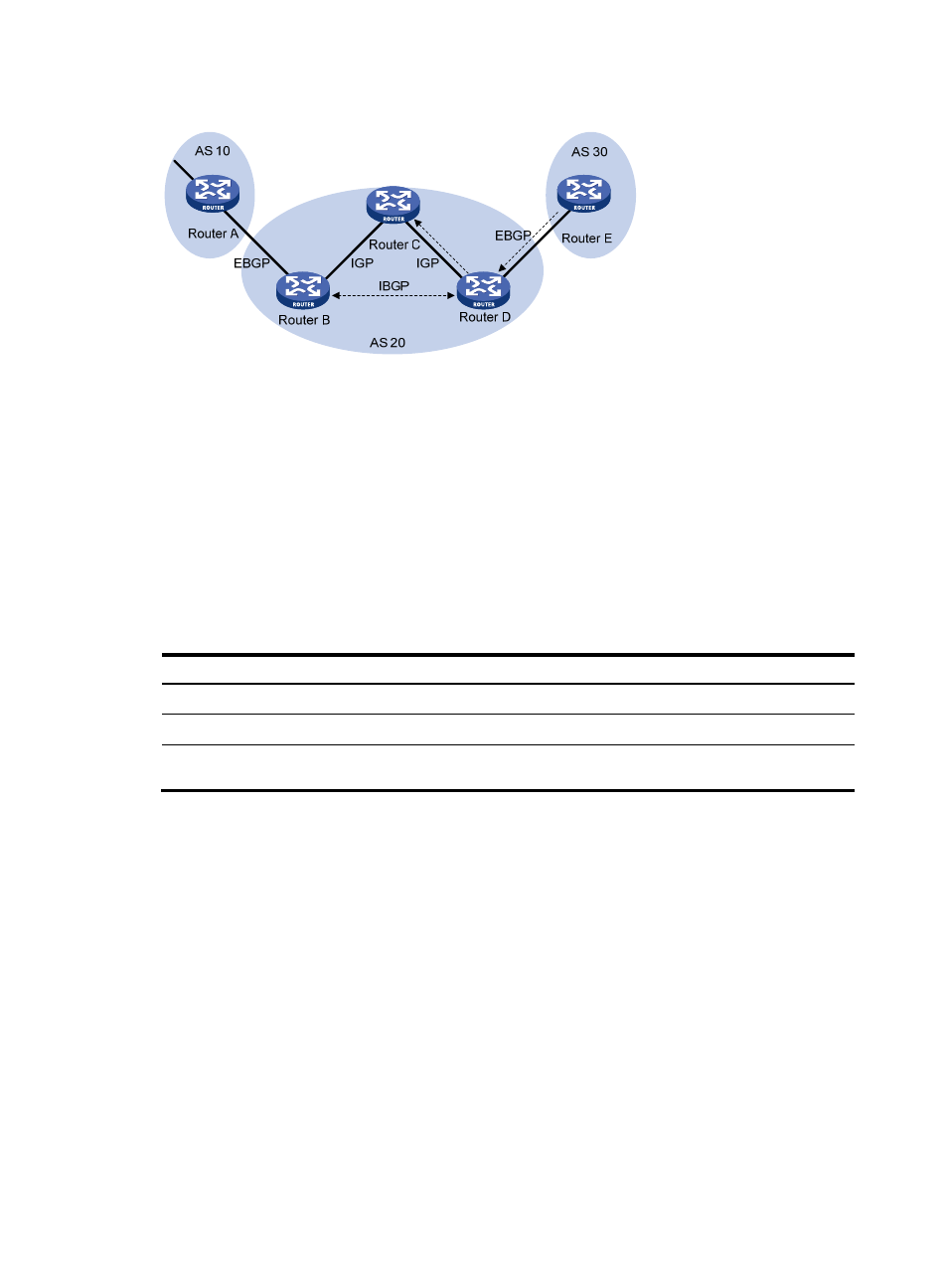H3C Technologies H3C S12500 Series Switches User Manual
Page 234

218
Figure 82 IBGP and IGP synchronization in an AS
For this example, if synchronization is enabled, and the route 8.0.0.0/24 received from Router B is
available in its IGP routing table, Router D advertises the IBGP route when the following conditions are
met:
•
The next hop of the route is reachable.
•
An active route with the same destination network segment is available in the IGP routing table (use
the display ip routing-table protocol command to check the IGP route state).
You can disable the synchronization feature in the following situations:
•
The local AS is not a transitive AS (AS 20 is a transitive AS in the above figure).
•
Routers in the local AS are IBGP fully meshed.
To enable BGP and IGP synchronization:
Step Command
Remarks
1.
Enter system view.
system-view
N/A
2.
Enter BGP view.
bgp as-number
N/A
3.
Enable synchronization
between BGP and IGP.
synchronization
Not enabled by default.
Limiting prefixes received from a peer or peer group
This task helps avoid attacks that send a large number of BGP routes to the router.
If the number of routes received from a peer or peer group exceeds the specified value, the router can
take the following actions based on your configuration:
•
Tear down the BGP session to the peer or peer group.
•
Display an alarm message, instead of tearing down the BGP session to the peer or peer group.
•
Tear down and then reestablishes the BGP session to the peer or peer group.
You can specify the threshold value for the router to display an alarm message. When the ratio of the
number of received routes to the maximum number exceeds the percentage value, the router displays an
alarm message.
To configure the maximum number of prefixes allowed to be received from a peer or peer group: